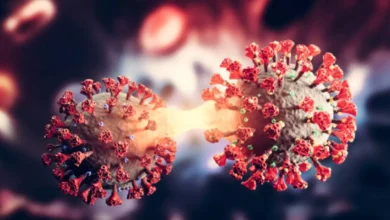 |
| Virus |
H5N1: A Closer Look at the Avian Intruder
H5N1 belongs to the influenza A virus family, notorious for causing seasonal flu and past pandemics. The “H5” and “N1” in its name denote specific proteins on the virus’s surface, crucial for infecting cells. Unlike seasonal flu strains, H5N1 exhibits high pathogenicity in birds, leading to severe illness and often death.
The Scary Spread: From Birds to Humans?
H5N1 primarily circulates among wild birds, particularly waterfowl. However, outbreaks in poultry farms raise concerns. Close contact with infected birds or contaminated environments poses a risk for humans. While direct human-to-human transmission is rare for H5N1, mutations could increase this possibility, making it a potential pandemic threat.
A Brutal Dance with Death: Symptoms and Mortality
H5N1 infection in humans can cause a spectrum of illness, ranging from mild respiratory symptoms to severe pneumonia, respiratory failure, and even death. The World Health Organization (WHO) reports a fatality rate of around 50% in confirmed human cases, a stark reminder of the virus’s severity.
The Looming Threat: Why H5N1 Worries Experts
Several factors make H5N1 a cause for concern.
- Highly Pathogenic in Birds: The devastating impact on poultry farms can disrupt food supplies and livelihoods.
- Spillover Risk: Outbreaks in mammals like farmed mink and dairy cattle raise concerns about increased opportunities for human transmission.
- Mutational Potential: The virus’s ability to mutate could lead to strains with enhanced ability to infect humans and spread more easily.
Global Efforts to Curb the Threat
International organizations like the WHO and the Food and Agriculture Organization (FAO) are working with national authorities to monitor H5N1 outbreaks in birds and humans. This includes:
- Surveillance: Tracking bird populations and poultry farms for H5N1 presence.
- Biosecurity Measures: Implementing strict hygiene protocols in poultry farms to prevent the spread of the virus.
- Vaccination Programs: Vaccinating poultry flocks to reduce the risk of outbreaks.
- Antiviral Stockpiling: Ensuring sufficient antiviral medication is available for potential human cases.
What You Can Do: Individual Preparedness
While the current public health risk from H5N1 is considered low, vigilance remains key. Here’s what you can do:
- Stay Informed: Follow updates from reputable health organizations like the WHO and CDC.
- Practice Good Hygiene: Frequent handwashing and proper respiratory hygiene are essential to prevent the spread of any respiratory illness.
- Avoid Contact with Sick Birds: Minimize contact with poultry farms or wild birds, especially if they appear sick or dead.
- Cook Poultry Thoroughly: Ensure proper handling and cooking of poultry to eliminate any potential viruses.
Conclusion: A Race Against Time
H5N1 is a serious threat with the potential to cause a devastating pandemic. International collaboration, ongoing research, and individual awareness are crucial to prevent this scenario. While the future remains uncertain, by staying informed and taking the necessary precautions, we can mitigate the dangers posed by H5N1 and work towards a healthier future.
Disclaimer: This blog post was written to create a general awareness. As of now, there is no major threat, but Nature is brutal and humanity should be ready.



